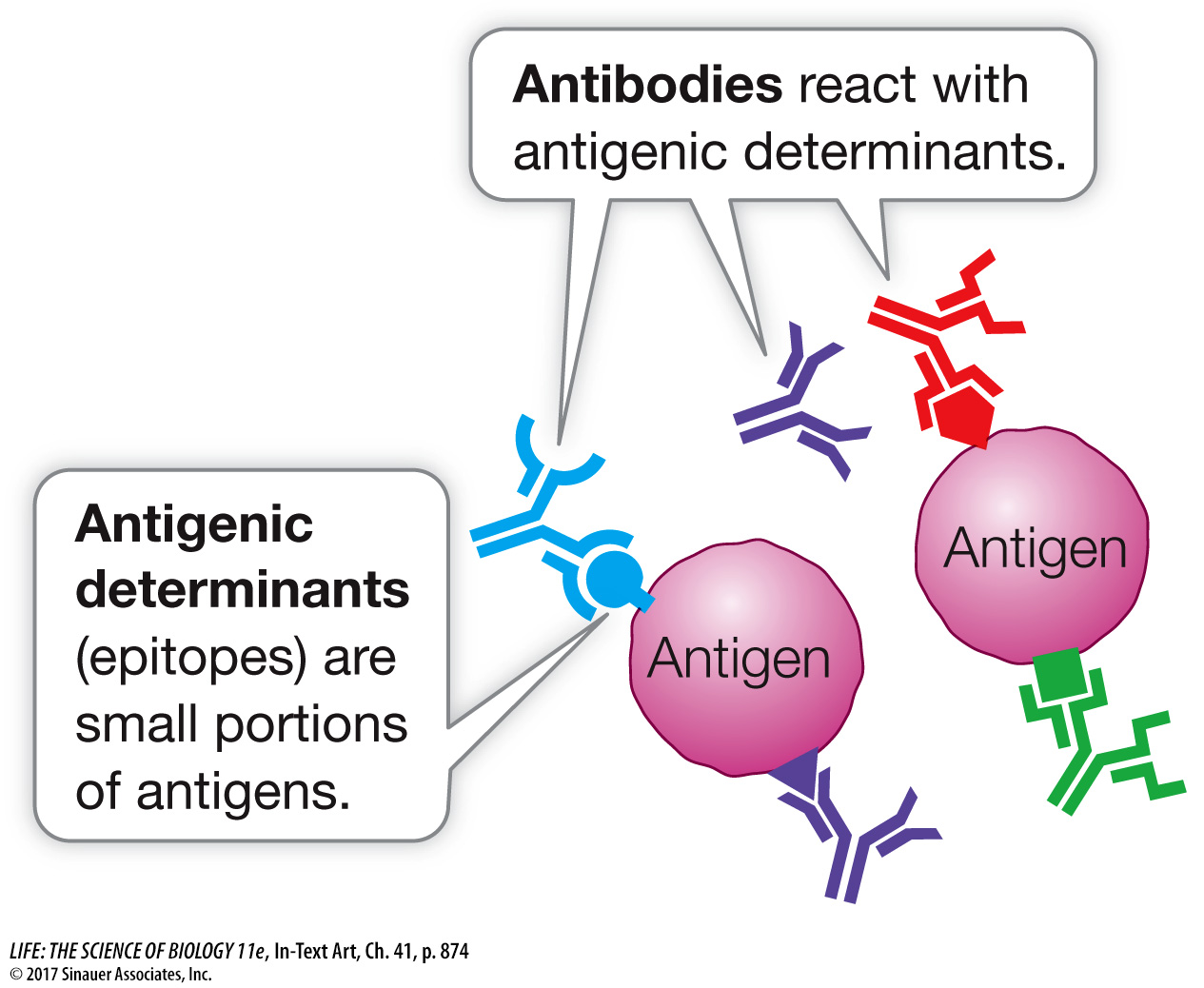What are the key features of adaptive immunity?
Four important features of the adaptive immune system are:
Specificity
The ability to distinguish self from nonself
The ability to respond to an enormous diversity of nonself molecules
Immunological memory
SPECIFICITY Lymphocytes (B and T cells) are crucial components of adaptive immunity. T cell receptors and the antibodies produced by B cells recognize and bind to specific nonself substances (antigens), and this interaction initiates an adaptive immune response. The specific sites on antigens that the immune system recognizes are called antigenic determinants, or epitopes:

An antigenic determinant is a specific portion of a large molecule, such as a certain sequence of amino acids that may be present in a protein. Antigens are usually proteins or polysaccharides, and there can be multiple antigens on a single invading bacterium. A single antigenic molecule can have multiple, different antigenic determinants. The host animal responds to the presence of an antigen with highly specific defenses involving T cell receptors and antibodies. These receptors and soluble proteins bind to the antigenic determinants. Each T cell and each antibody is specific for a single antigenic determinant. For the remainder of the chapter, we will refer to antigenic determinants simply as “antigens.”
DISTINGUISHING SELF FROM NONSELF You have seen how the innate immune system distinguishes between self and nonself molecules. The adaptive immune system has another set of mechanisms for distinguishing self from nonself. The human body contains tens of thousands of different molecules, each with a specific three-
DIVERSITY Challenges to the immune system are numerous. Pathogens take many forms: viruses, bacteria, protists, fungi, and multicellular parasites. Furthermore, each pathogenic species usually exists as many subtly different genetic strains, and each strain possesses multiple surface features. Estimates vary, but a reasonable guess is that humans can respond specifically to 10 million different antigens. Upon recognizing an antigen, the adaptive immune system responds by activating lymphocytes of the appropriate specificity.
IMMUNOLOGICAL MEMORY After the adaptive immune system responds to a particular type of pathogen once, the adaptive immune system “remembers” that pathogen and can usually respond more rapidly and powerfully to the same threat in the future. This immunological memory usually saves us from repeats of childhood diseases such as chicken pox.
All four of these features of adaptive immune defense characterize both the humoral immune response and the cellular immune response.